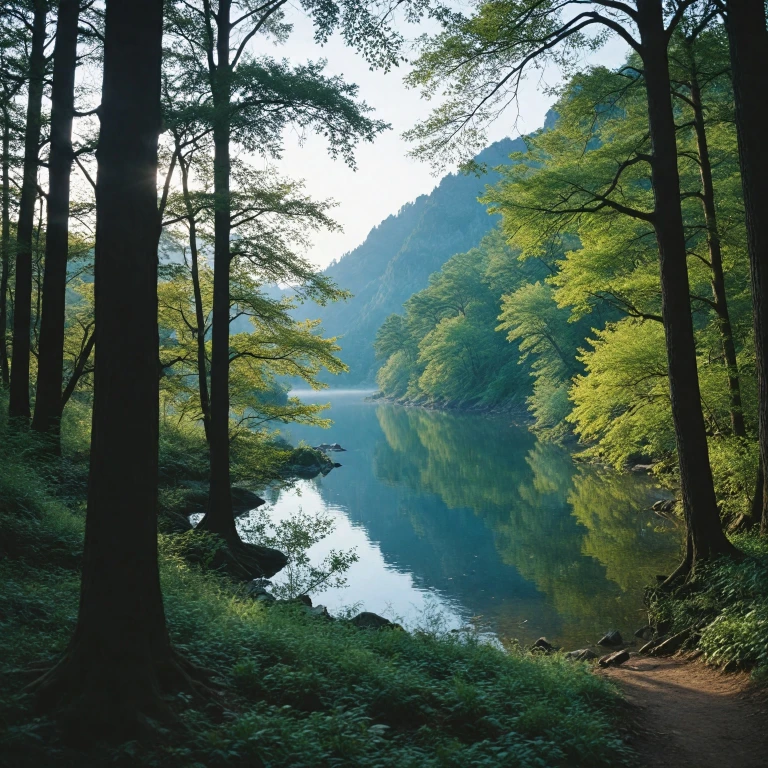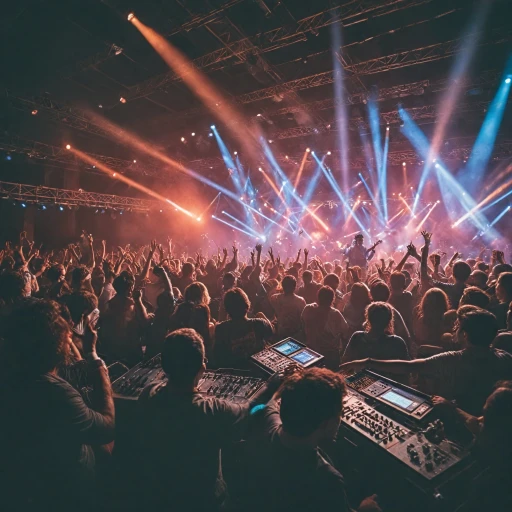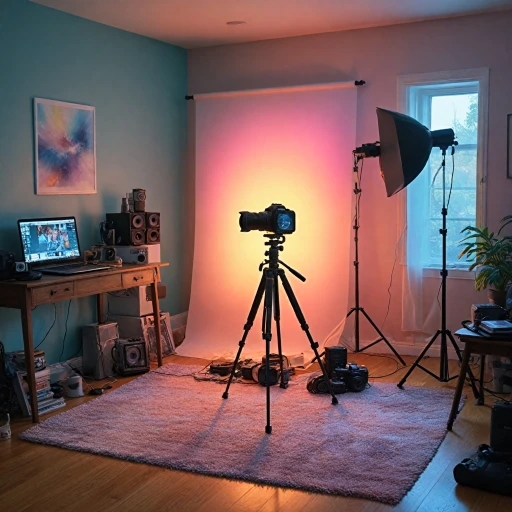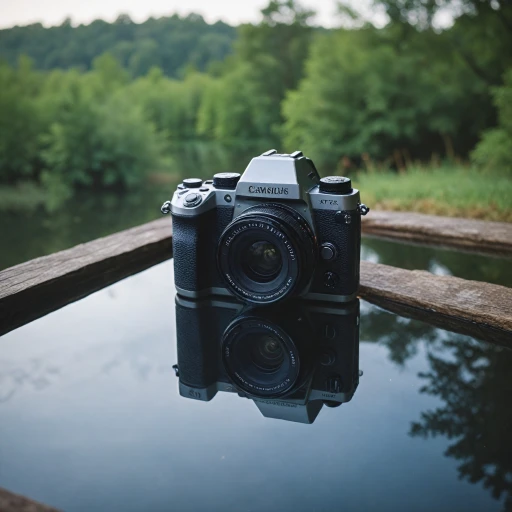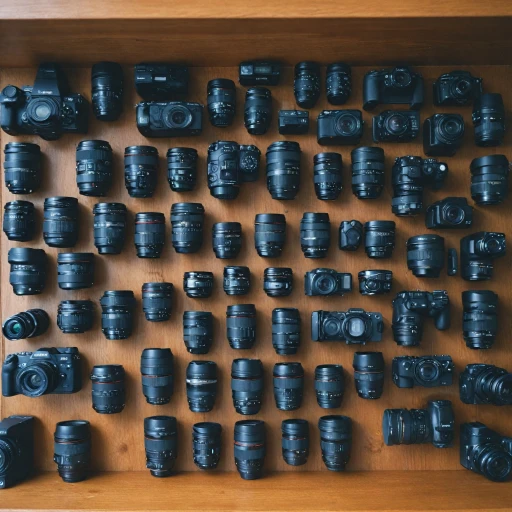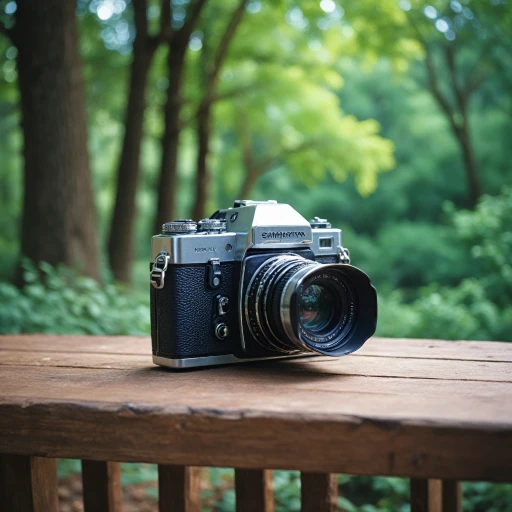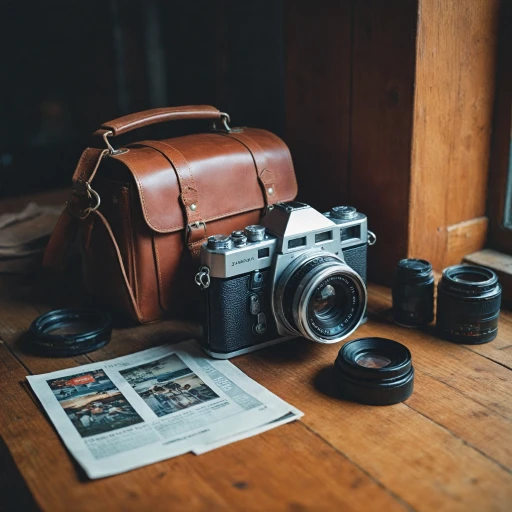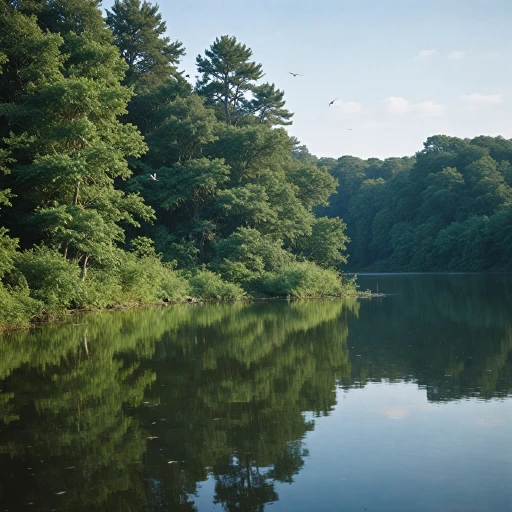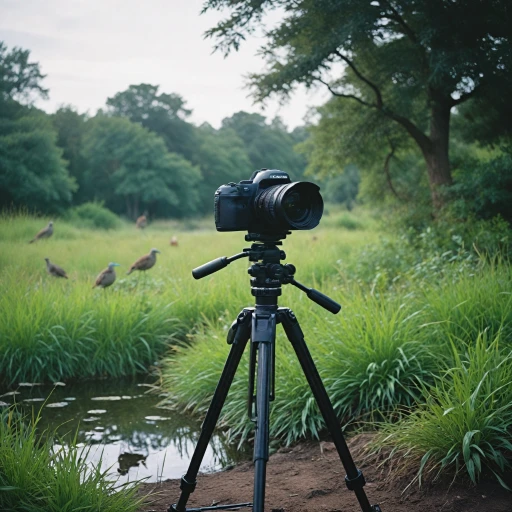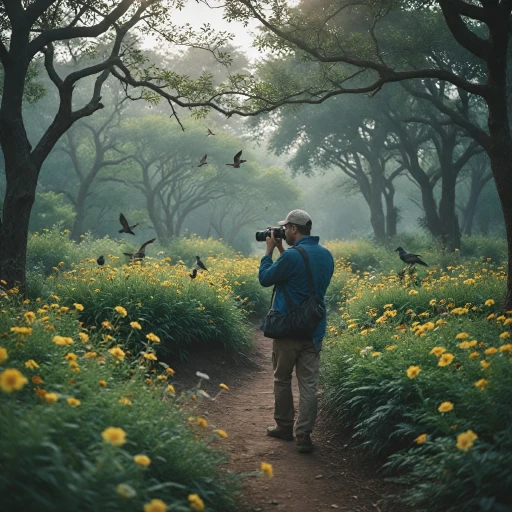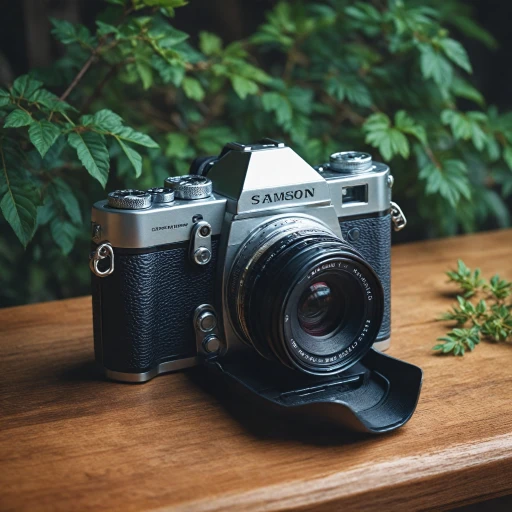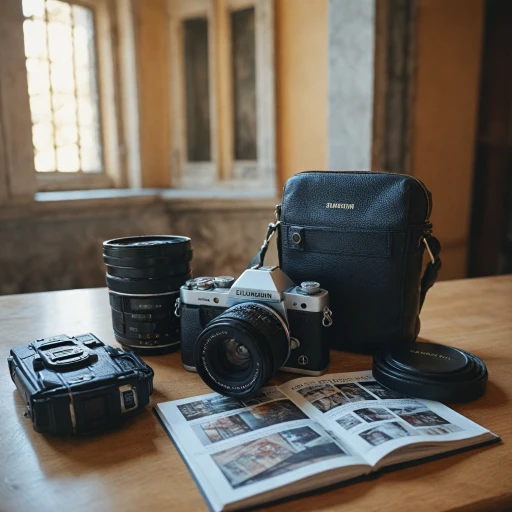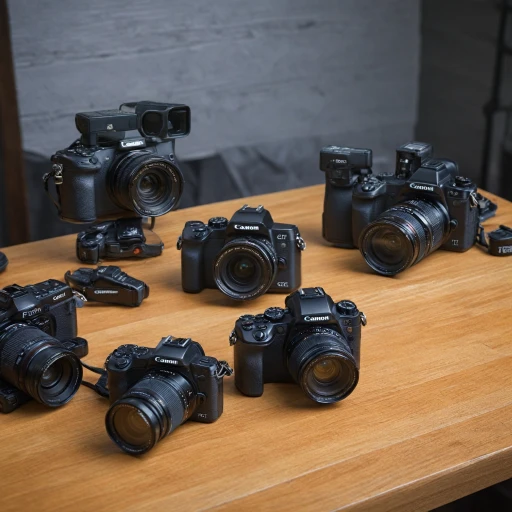
Understanding the Mamiya 7
The Mamiya 7: An Icon in Film Photography
The Mamiya 7 holds a special place in the world of film photography. As a medium format camera, it offers photographers an exceptional experience that blends precision with the charm of film. Unlike the digital counterparts that dominate the market today, the Mamiya 7 is celebrated for its unique approach to capturing images, making it an enduring choice for enthusiasts who appreciate the art of shooting on film.A Rangefinder with a Twist
As a rangefinder camera, the Mamiya 7 stands out with its distinct design and functionality. Its external viewfinder system allows photographers to compose shots with clarity, embracing a traditional method that opens a window to a bygone era of image-making. This camera's viewfinder, coupled with the flexibility of interchangeable lenses, such as the renowned Mamiya lens and various Mamiya lenses available, enhances its appeal.Medium Format Simplicity
The Mamiya 7 uses medium format film, offering larger negative sizes compared to the standard 35mm format. This contributes to its remarkable image quality and depth, especially when shooting portraits and landscapes. The camera's interaction with light and exposure settings demands a thoughtful approach, encouraging photographers to concentrate on each click's essence. Film choices like Kodak Portra or Fuji add to the journey, infusing the process with a textured, vibrant finish that even top digital cameras strive to emulate. Learn about the essentials of capturing the soul of your subjects with this extraordinary film camera by exploring Aura Photography Equipment.Key Features of the Mamiya 7
Unveiling the Features that Set It Apart
The Mamiya 7 distinguishes itself with a blend of advanced features and traditional charm, catering to enthusiasts who value both form and function. As a medium format film camera, it opens up a world of possibilities that few digital counterparts can replicate. Among the myriad of cameras available today, the Mamiya 7 stands out with its ability to shoot film in a way that captures the warmth and character of a bygone era.
One of the standout features is its rangefinder mechanism, which is a rare find in the world of medium format cameras. This type of viewfinder offers a unique perspective, allowing photographers to compose shots with precision and clarity. The rangefinder system in the Mamiya 7 is famed for its accuracy, which is essential when shooting with the high-quality Mamiya lenses that complement this camera.
Speaking of lenses, the Mamiya 7 is compatible with an array of premium lenses, including the acclaimed Mamiya 65mm and 80mm lenses. These lenses are known for producing exceptional clarity, making them ideal for capturing landscapes and portraits alike. The inclusion of a panoramic kit further extends the camera's versatility, enabling wide-angle shots that capture a broader scene—a functionality that is not commonly found in traditional film cameras.
Another critical feature is the shutter speed range. The Mamiya 7 offers flexibility in exposure settings, which is crucial when managing the amount of light hitting the format film. This adaptability ensures that photographers can take advantage of various lighting conditions, whether shooting under the bright sunlight with Kodak Portra or in dimmer environments where a slower shutter speed might be necessary.
Mamiya’s attention to detail also extends to its build quality. The camera is designed with durability in mind, sporting a robust construction that can withstand the rigors of frequent use. Despite its solid build, it remains surprisingly lightweight for a medium format camera, making it a viable option for photographers who are often on the move.
For those looking into the fascinating world of film photography, the Mamiya 7 is a noteworthy contender. It bridges the gap between classic Mamiya review elements and modern-day usability. For more on its impact and details, explore further insights on this unique photography tool in our detailed analysis here.
Comparing Mamiya 7 with Digital Cameras
Film vs. Digital: A Timeless Comparison
When it comes to comparing the Mamiya 7 with modern digital cameras, it's essential to understand the differences in medium and technology that each brings to the table. The Mamiya 7, a medium format film camera, allows photographers to explore the art of film photography with a unique approach. Meanwhile, digital cameras offer convenience and advanced features that appeal to many photographers today. Firstly, let's talk about the image quality. The Mamiya 7, with its medium format film, such as Kodak Portra, delivers extraordinary detail and a particular depth that digital sensors struggle to match. This is especially evident in portrait photography, where the tonal range and texture captured on film give an authentic, organic feel. On the other hand, digital cameras like the popular Leica models give the advantage of instant feedback through their electronic viewfinders. This feature, along with the ability to adjust settings like shutter speed and exposure on the fly, offers an efficiency that film cameras, including the Mamiya, can't match.The Practical Aspect of Photography
Using the Mamiya 7 comes with its own set of challenges, as previously discussed. Digital cameras shine in the area of practicality, offering storage convenience with SD cards compared to carrying rolls of film. When considering a shoot involving extensive Panoramic views, a digital camera with a panoramic kit offers an ease of use that the Mamiya panoramic feature might find challenging.Creative Control
Film cameras like the Mamiya 7 open a window to a more deliberate form of photography where each click counts, ensuring every shot is meaningful. This cultivation of patience contrasts sharply with the high-speed, multi-shot capabilities of digital devices. The feel of manually adjusting a lens, the distinctive sound of the shutter, and the tangible nature of film photography contribute to a creative process that many find rewarding. Choosing between film and digital ultimately depends on the ideals and preferences of the photographer. However, the Mamiya 7 brings a unique perspective that resonates well with those in pursuit of film’s timeless charm.The Art of Film Photography with Mamiya 7
Diving into the Essence of Film Photography
Film photography, particularly with a Mamiya camera like the Mamiya 7, opens a window into an art form imbued with a rich history and a distinctive aesthetic that digital counterparts often struggle to replicate. This medium format camera engages photographers in a process that's both nostalgic and rewarding, offering a perspective that's cherished by enthusiasts. The allure of shooting with a film camera lies in the tangible, deliberate nature of the process. When using a Mamiya lens to capture a shot, the viewfinder becomes your portal, revealing a world where every click of the shutter embodies a commitment to a singular moment. Unlike point-and-click digital cameras, the Mamiya's use of a rangefinder viewfinder encourages thoughtful compositions, and the anticipation of seeing your final image is palpable. One of the iconic film choices among photographers is Kodak Portra. Known for its soft color palette and fine grain, Portra film pairs harmoniously with the hues in portraits and landscapes, enhancing the inherent value of medium format photography. The camera Mamiya’s metering system, coupled with an external viewfinder, affords precision in managing exposure, ensuring that the warmth and depth of Kodak film are faithfully captured. Moreover, the Mamiya's unique ability to switch lenses opens new creative avenues, much appreciated by those who thrive on variety and experimentation in their photography. From a Mamiya review standpoint, this camera provides flexibility with its different lens kits, including panoramic kits that expand your field of vision dramatically. These add-ons enhance the experience, allowing photographers to explore the versatility of format film. Yet, with the merits come challenges, as previously mentioned. Understanding the intricacies of light and shutter speed is vital, with no LCD screen to immediately assess outcomes. Film requires a different kind of patience and appreciation; it's a balance of art and science that charms photographers into a slower rhythm, urging them to hone their skills. Film photography with a Mamiya 7 proves that even within our digital age, there's an enduring beauty and craft in analog approaches. It's not merely about taking pictures—it's about crafting images, one frame at a time, and enjoying the artistic journey it entails.Challenges of Using the Mamiya 7
Navigating the Intricacies of the Mamiya 7
The Mamiya 7 is a highly regarded medium format film camera cherished by enthusiasts and professionals alike. However, its usage is not without its unique set of challenges. Here’s a closer look at some potential hurdles when shooting with this iconic camera.
Film Photography Demands
Using the Mamiya 7 requires a dedication to the art of film photography. Unlike digital cameras, shooting film means managing the entire process from selecting appropriate film stocks like Kodak Portra or Fuji to handling development and scanning. This can be both time-consuming and costly, especially for beginners in film photography.
Handling and Maintenance
Being a mechanical device, the Mamiya 7 demands regular maintenance, which includes the care of its rangefinder and lenses. Issues with the viewfinder or lens alignment can affect the precision of your shoots, particularly in achieving focus accuracy and adjusting exposure.
Limited Accessories and Features
Compared to digital counterparts, the Mamiya 7 lacks some modern conveniences. For instance, features like automatic exposure and auto-focus are absent, which may present a learning curve for those used to digital cameras. Additionally, the camera’s compatibility with specific lenses, such as the lens Mamiya, further amplifies the need for careful planning.
Size and Portability Concerns
With its medium format, the camera isn’t exactly what you’d call compact. Carrying it alongside extra film, possibly mamiya lenses, and other essential gear can make portability an issue, especially during long sessions or in challenging terrains.
Shooting in Varying Light Conditions
The Mamiya 7’s use in diverse lighting conditions can be demanding due to its reliance on manual exposure settings. A missed calculation in shutter speed or the positioning of the dark slide can result in underexposed or overexposed images.
Despite these challenges, the Mamiya 7 opens a window to a unique and rewarding photographic experience. It’s essential for users to be prepared for the nuances involved and to embrace the intricacies that come with shooting medium format film.
Who Should Consider the Mamiya 7?
Is the Mamiya 7 the Right Fit for You?
When it comes to choosing a camera that suits your needs as a photographer, the Mamiya 7 offers a unique combination of features that appeal to specific types of users. Here are some considerations to determine if this film camera fits into your photography aspirations:- Analog Enthusiasts: If you have a passion for film and the tactile experience it provides, the Mamiya 7 might captivate you. With film options like Kodak Portra, the Mamiya 7 opens a window to rich, vibrant portraits and landscapes due to its medium format capability.
- Professional Photographers Looking for Quality: Known for its high-quality Mamiya lenses, this camera is ideal for photographers who value medium format film for its ability to capture exceptional detail. The Mamiya lens coupled with precise exposure control, provides outstanding image quality, a quality that often rivals that of Leica and Fuji rangefinders.
- Those Appreciating Unique Perspectives: The ability to use an external viewfinder and engage in panoramic shooting makes the Mamiya 7 distinct. For photographers intrigued by diverse compositions, such as incorporating a panoramic kit to extend creative options, this camera is worth considering.
- Lovers of Simplicity and Focus: Those who prioritize simplicity and focus on capturing the essence of a scene, rather than getting caught up in complex settings, might appreciate the straightforward shutter speed and light control of this camera. The Mamiya 7 emphasizes the art of photography without the distraction of excessive digital features.
- Challenges and Commitment: It's important to acknowledge the challenges of using the Mamiya 7. Managing elements like the dark slide and maintaining Mamiya reviews suggest this camera requires dedication and a good understanding of film photography basics. So, if you are committed to learning and mastering the quirks of film cameras, the Mamiya 7 can be a rewarding choice.
